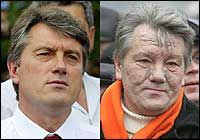Chloracne
|
|
Chloracne is an acne-like eruption of blackheads, cysts, and pustules associated with over-exposure to certain halogenic aromatic hydrocarbons, such as chlorinated dioxins and dibenzofurans. The lesions are most frequently found on the cheeks, behind the ears, in the armpits and groin region.
The condition was first described in German industrial workers in 1897 by Von Bettman, and was initially believed to be caused by exposure to toxic chlorine (hence the name "chloracne"). It was only in the mid-1950s that chloracne was associated with aromatic hydrocarbons[1]. The substances that may cause chloracne are now collectively known as "chloracnegens".
Chloracne is particularly linked to toxic exposure to dioxins (byproducts of many chemical processes, including the manufacture of herbicides such as Agent Orange) — so much so that it is considered a clinical sign of dioxin exposure. The severity and onset of chloracne may follow a typical asymptotic dose response curve.
| Contents |
Etiology and progression
Chloracne normally results from direct skin contact with chloracnegens, although ingestion and inhalation are also possible causative routes.
Chloracnegens are fat-soluble, meaning they persist in the body fat for a very long period following exposure. Chloracne is a chronic inflammatory condition that results from this persistence, in combination with the toxin's chemical properties. It is believed, at least from rodent models, that the toxin activates a series of receptors promoting macrophage proliferation, inducing neutrophilia and leading to a generalised inflammatory response in the skin. This process may also be augmented by induction of excess tumor necrosis factor in the blood serum.
The inflammatory processes lead to the formation of keratinous plugs in skin pores, forming yellowish cysts and dark pustules. The skin lesions occur mainly in the face, but in more severe cases they involve the shoulders and chest, the back, and the abdomen. In advanced cases, the lesions appear also on the arms, thighs, legs, hands and feet.
In some instances, chloracne may not appear for three to four weeks after toxic exposure; however in other cases - particularly in events of massive exposure - the symptoms may appear within days[1],[2].
Treatment
Once chloracne has been identified, the primary action is to remove the patient and all other individuals from the source of contamination. Further treatment is symptomatic.
Severe or persistent lesions may be treated with oral antibiotics or isotretinoin. However, chloracne may be highly resistant to any treatment.
The course of the disease is highly variable. In some cases the lesions may resolve within two years or so; however, in other cases the lesions may be effectively permanent (mean duration of lesions in one 1984 study was 26 years, with some workers remaining disfigured over three decades after exposure[3]).
Recent research by groups at University of Cincinnati School of Medicine in Ohio and the University of Western Australia indicated that PCB poisoning, including chloracne symptoms, can be treated with fat substitute olestra in the form of fat-free Pringles [1] (http://www.betterhumans.com/News/news.aspx?articleID=2004-12-17-6).
Related conditions
Chloracne is very often seen in combination with hyperhidrosis (clammy, sweaty skin) and porphyria cutanea tarda (a skin condition of increased pigmentation, hair coarsening and blistering).
Notable cases
- 193 cases of chloracne occurred in Seveso, Italy in 1976 following the Seveso disaster in which several kilograms of TCDD were released into the atmosphere.
- Hundreds of individuals suffered chloracne after chronic exposure to PCBs and PCDFs in central Taiwan in 1979.
- Ukrainian President Viktor Yushchenko supposedly suffered from extremely prominent facial chloracne after being diagnosed with dioxin poisoning in late 2004. His diagnosis of chloracne was claimed by prominent toxicologist John Henry.
See also
- Dioxin
- Neal Stephenson's novel Zodiac discusses the effects of chloracne.
References
[1] Williams, D.E.; Wolfe, W.H.; Lustik, M.B. et al. (1995). An Epidemiologic Investigation of Health Effects in Air Force Personnel Following Exposure to Herbicides. Vol. 4.
[2] De Marchia, B, and Ravetzb, J.R. (1999). Risk management and governance: a post-normal science approach. Futures 31:743–757.
[3] Moses, M. et al. (1984). American Journal of Industrial Medicine 5(3):161-82.
External links
- Chloracne, Goiter, Arthritis, and Anemia after Polychlorinated Biphenyl Poisoning: 14-Year Follow-Up of the Taiwan Yucheng Cohort (http://dir.niehs.nih.gov/direb/fulltext/ehp1999wjr1.html)
- Chloracne (http://dermnetnz.org/acne/chloracne.html)
- Agent Orange Brief D2 (http://www.geocities.com/Pentagon/Bunker/8212/briefD2.html)de:Chlorakne

